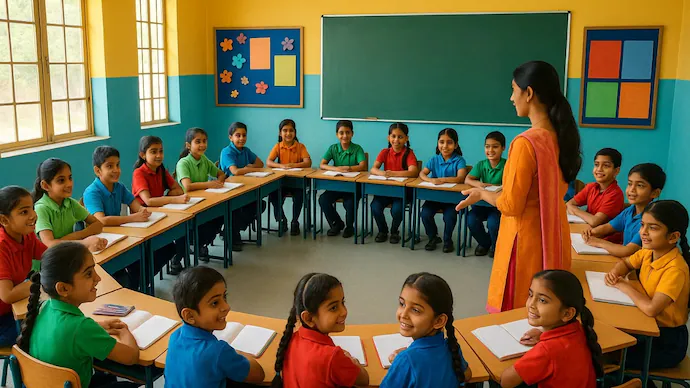For decades, Indian classrooms have followed a row-based seating model, often creating a silent hierarchy—frontbenchers seen as attentive and engaged, backbenchers often stereotyped as inattentive or disconnected. Now, a school in Tripura is challenging that norm by introducing U-shaped classroom seating aimed at fostering inclusion and equal participation.
This innovative shift was inspired by a scene from the Malayalam film Sthanarthi Sreekuttan, in which a student suggests that every learner deserves equal access to the teacher’s attention. “Backbenchers, come sit in the front,” the character says—a line that resonates with students across the country who have felt overlooked at the back of the room.
By moving away from the traditional layout, the U-shaped seating design creates a more open and interactive environment. Teachers can maintain eye contact with all students, while learners feel more encouraged to participate in discussions. This layout not only increases visibility but also reduces the psychological divide between students, making everyone feel equally involved.
Educators at the school have already observed more dynamic classroom discussions, better engagement, and a noticeable boost in student confidence. The new seating fosters collaboration over competition and shifts the focus from where a student sits to how they learn and contribute.
Backbenches, once a spot for quiet observers or occasional mischief-makers, are now being redefined. In this model, every seat feels like a front-row seat—inviting, visible, and valued.
As this Tripura school leads the way, more institutions across India are beginning to explore similar changes. The goal: to create learning environments where every student feels seen, heard, and equally important.
This simple change in seating may well spark a broader movement toward inclusive and student-centered education in India.









